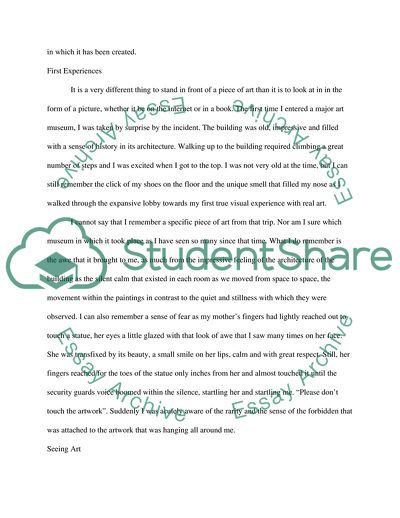Cite this document
(Transforming Revelations through Museum Experiences Essay Example | Topics and Well Written Essays - 2000 words, n.d.)
Transforming Revelations through Museum Experiences Essay Example | Topics and Well Written Essays - 2000 words. https://studentshare.org/culture/1745852-write-a-paper-about-your-museum-experience-at-the-museum-of-fine-arts-boston-mfa-your-sense-of-identity-in-relation-to-art-and-your-visual-literacy
Transforming Revelations through Museum Experiences Essay Example | Topics and Well Written Essays - 2000 words. https://studentshare.org/culture/1745852-write-a-paper-about-your-museum-experience-at-the-museum-of-fine-arts-boston-mfa-your-sense-of-identity-in-relation-to-art-and-your-visual-literacy
(Transforming Revelations through Museum Experiences Essay Example | Topics and Well Written Essays - 2000 Words)
Transforming Revelations through Museum Experiences Essay Example | Topics and Well Written Essays - 2000 Words. https://studentshare.org/culture/1745852-write-a-paper-about-your-museum-experience-at-the-museum-of-fine-arts-boston-mfa-your-sense-of-identity-in-relation-to-art-and-your-visual-literacy.
Transforming Revelations through Museum Experiences Essay Example | Topics and Well Written Essays - 2000 Words. https://studentshare.org/culture/1745852-write-a-paper-about-your-museum-experience-at-the-museum-of-fine-arts-boston-mfa-your-sense-of-identity-in-relation-to-art-and-your-visual-literacy.
“Transforming Revelations through Museum Experiences Essay Example | Topics and Well Written Essays - 2000 Words”. https://studentshare.org/culture/1745852-write-a-paper-about-your-museum-experience-at-the-museum-of-fine-arts-boston-mfa-your-sense-of-identity-in-relation-to-art-and-your-visual-literacy.


